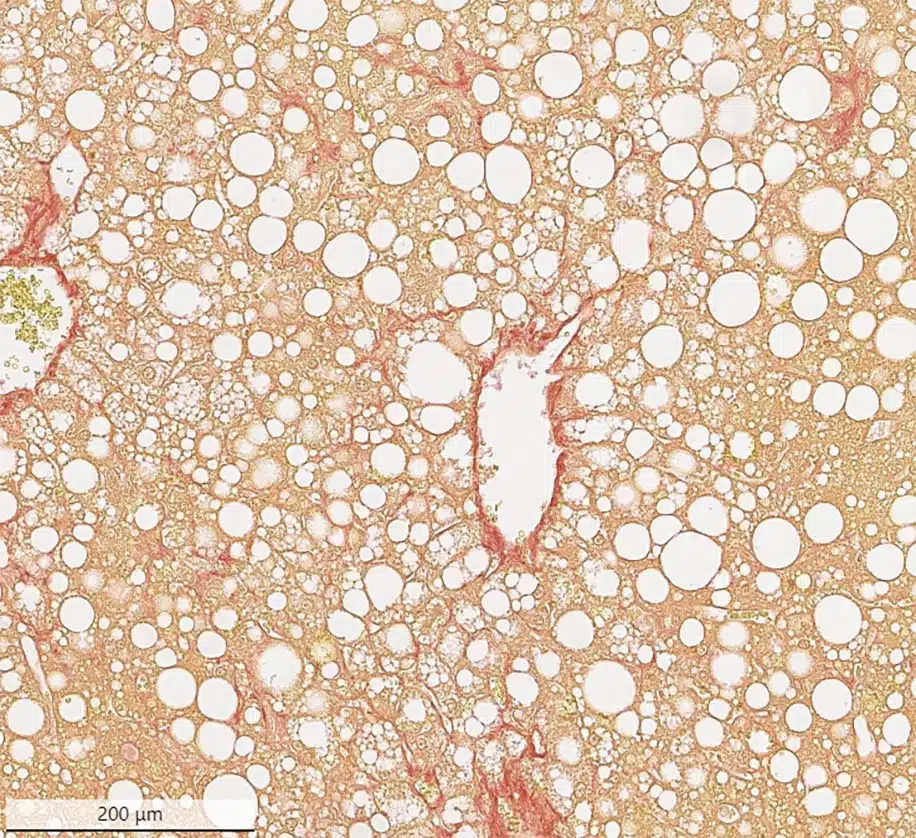
Administration of CCl4 is used to accelerate (alone or in conjunction with other challenges) the development of liver damage to recapitulate the early phase effects of non-alcoholic fatty liver disease (NAFLD), specifically, inflammation, fibrosis, and hepatocellular degeneration, ballooning, and necrosis.
Through the assessment of various biomarkers and end points, the inhibition of fibrosis progression can be tracked and quantified to more accurately and specifically gauge the effectiveness of potential therapeutics.
Fast and Reliable
The CCl4 model is faster at inducing hepatocellular damage than diet-only models, leading to earlier answers.
Closely Resembles Human Disease
Similar patterns of stellate cell activation, macrophage infiltration, and changes to extracellular matrix components are seen in both human disease and mouse models.
Long Track Record
CCl4 was one of the first chemical-insults used to model toxic fatty-liver disease, so a wealth of previous data exists with which to compare and design experiments around.